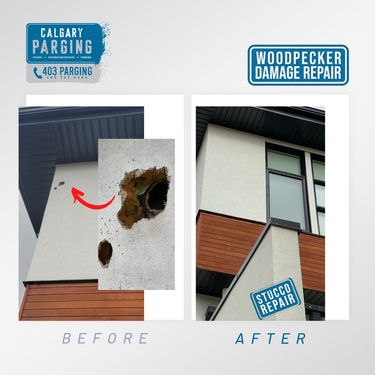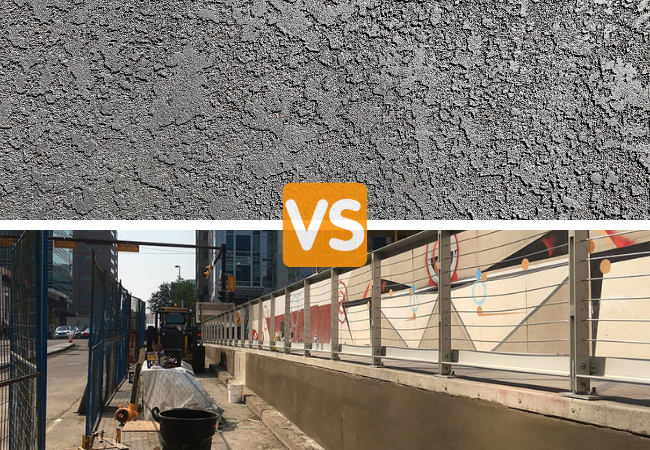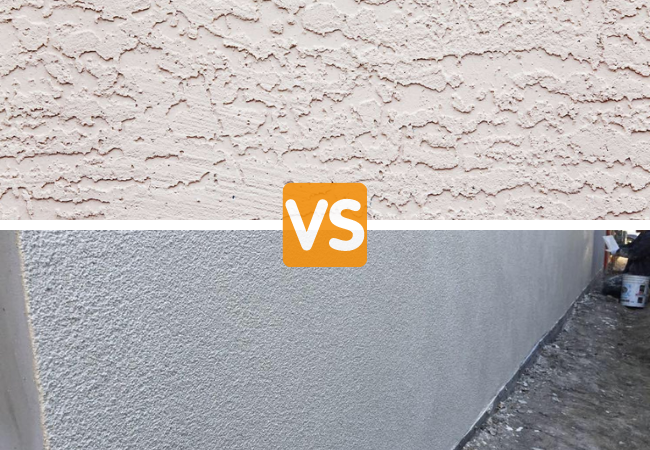Thanks to its versatility and durability, stucco continues to be a popular choice for home exteriors. The material dates back as far as 1400 BCE. Ancient stucco buildings can be found throughout Greece and Rome. It was used in palaces, tombs, and other architectural sites. One of the things that makes stucco so attractive today is that it doesn’t require much maintenance compared with siding options like wood, which needs sealing every few years. But while stucco is low-fuss, the material is susceptible to environmental conditions such as wind, rain, or harsh sunlight. Regular cleaning is essential if you want to keep your exterior looking good. Plus, when cracks, holes, and chips occur naturally over time (especially with older stucco), it can compromise the integrity of the material and create an environment perfect for mould and mildew growth. So, how do you take care of stucco properly so it lasts? Here’s what you need to know.
What Is Stucco?
Stucco is basically a mixture of cement, sand, and water. Lime may be added (for workability), or glass fibers (for strength) or acrylics (to make them easier to use). That mix creates something incredibly durable. Stucco will last anywhere from 50-80 years. Stucco is also fire-resistant, energy-efficient, and can look more modern than brick.
Here’s what you need to know about the different types of stucco.
Acrylic Stucco
Acrylic Stucco is made with acrylic resins, making it less prone to cracking than traditional stucco.
Conventional/Textured Stucco
Conventional (textured) stucco is made from sand, lime, and water. It has a rough, textured finish that looks more elegant. A stable mesh base is usually applied to keep this type of stucco from cracking (which will likely happen anyway).
Let’s find out why maintenance is important and what you can do next.
Helpful resource: Traditional (Conventional) Stucco vs Acrylic Stucco
Why Properly Maintaining Your Home’s Exterior is Important
No exterior material will remain pristine forever. Exteriors are exposed to the elements so it’s only natural that it collects dirt, dust, and pollutants. And because stucco has a porous surface and tends to be absorbent, when it rains, for example, the dirt splashes up onto the exterior walls causing unsightly stains. Stucco requires regular maintenance to keep its aesthetic appeal.
Besides, if you don’t take regular care of these surfaces, mold growth and damage could develop from water infiltration. In other words, maintaining stucco avoids significant repairs in the future.
Moreover, keeping the outside of your home looking good increases its value on the market. You won’t get any potential long-term financial benefits if your stucco is cracked or grimy. So why not take good care of it by cleaning it?
Methods to Clean Stucco
But how do you clean stucco? You actually have a few options. Let’s get into them next!
Use a Pressure Washer
A pressure washer is arguably the most effective way to properly clean stucco surfaces. It works much better (and faster) than just using a garden hose alone.
If this is your choice, don’t put the settings too high, as it can damage the surface and lead to water infiltration behind the stucco. You’ll need a pressure washer with at least 1,500 psi minimum and 2,800 psi maximum. For acyclic stucco, don’t use anything higher than 1000 psi.
Keep yourself between 12-24 inches back from where you’re aiming, and use a 40-degree tip.
Note that it’s possible the finish may come off in some spots from this method. This doesn’t do anything to the structure, but if the finish comes off, it changes the aesthetic. You can fix this if you’ve found it happened while pressure washing. However, you’ll need to know what finish material is on your home and the type of texture.
If you’re worried about causing damage via pressure washing, an alternate technique would be using only a brush and gentle rinsing from your garden hose instead. This method requires more work. But it’ll give you better results compared to just hosing down areas with your hose.
Consider getting brushes with extension wands to extend reachability.
Stucco surfaces usually take 24 hours to dry after washing. So, think about cleaning on a day where there’s not a lot of wind or rain to keep it clean.
Now, let’s dig in and find out what cleaning agents you can use.
Cleaning Agents You Can Use on Stucco
You’ll want a cleaner if you have something tough to remove, like mold or mildew. What are some of your best options? Below are some cleaners considered more effective.
Dish Soap and Bleach
Use dish soap mixed with warm water first to remove dust/debris, especially for acyclic stucco. You don’t want to use harsh chemicals on this. Warm water (not any higher than 100°F) is sufficient.
For traditional stucco, if dish soap doesn’t work, you can use bleach and water together. Use 1 part bleach for every 10-20 parts of water. But if stains still aren’t coming off, strengthen it by doing 1 part bleach for every 5-10 parts of water instead. You can even add borax if you need. Just ensure no harsh chemicals get onto flowers/trees in the process!
Stucco Cleaners
Another excellent option for cleaning stucco is to use stucco cleaners, which offer a convenient and easy way to remove dirt or stains. Most of them come in spray bottles; you only need to connect them with the garden hose, and spots or stains will wash away easily. You can buy bulk containers and fill up smaller jugs attached to your garden hose. Smaller jars generally cover around 1,000 sq. ft. of wall.
Call a Professional
Get professional help if these solutions don’t work. They might use a chemical solution such as trisodium phosphate (TSP) that must be applied while wearing personal protective equipment (PPE). Leave this kind of heavy-duty cleaning in the hands of a pro from an exterior painting service provider.
Enhance the Longevity of Stucco
Two main things help enhance how long stucco lasts: elastomeric coatings and repairing cracks.
Elastomeric Coatings
Elastomeric coatings are the first option; these are designed to protect masonry surfaces against rain and wind, so using them helps keep siding sealed — thus preventing moisture from getting inside where it could lead to mould growth. Elastomeric paint may also fill in minor hairline cracks better than other types of paint might be able to do.
However, there are times when elastomeric coatings aren’t the best choice. For instance, if your stucco already has several coats of paint on it, you won’t want another coat to put on because adding enough layers of elastomeric paint can pull off whatever coating’s below it unless it’s tightly adhered to the substrate.
Repair Stucco Cracks
Repairing stucco cracks right away is another crucial step to ensure your stucco lasts as long as possible. Breaches in siding can allow moisture bacteria or unwanted pests, creating further damage over time if not fixed promptly.
Don’t worry about seeing small cracks (if it’s less than 1/8″ wide) because you can fix those quickly by using caulking. Most people can do this without calling anyone else for help.
Inspect affected areas annually and reapply as needed. Acrylic caulking is typically recommended since it lasts longer and works better than other types.
Stucco repair kits can be found at local hardware stores, but they might not have everything you need. It’s worth checking Amazon and Home Depot, where online retailers offer kits with the necessary materials to fix minor issues such as cracks or holes. Remember that larger cracks (those wider than 1/8″) may require a stucco contractor because it could indicate more extensive damage.
Properly Caring for Stucco Surfaces
Stucco is an attractive exterior finish option that’s relatively low-maintenance, durable, versatile, and beautiful. Regularly maintaining it using the correct methods discussed here allows homeowners to keep their stucco looking great for many years. Whether you have acrylic or conventional stucco, understanding its unique needs and addressing them quickly can save time, money, and potential headaches.
6x Award Winning Stucco Company
We give an alluring finish to each surface by using premium made in Canada masonry products. 300+ verified reviews with 5-star ratings.
* No credit card required




